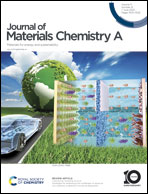Strategies for addressing the challenges of aqueous zinc batteries enabled by functional separators
Abstract
Aqueous zinc batteries (AZBs) are considered promising candidates as next-generation energy storage devices due to their high safety, low cost, ample resources and environmental benignity. Nevertheless, some critical issues such as the formation of zinc dendrites at the anode and the shuttle effect of some typical cathode materials (i.e., iodine cathode) hinder the practical and large-scale applications of AZBs. The above-mentioned issues are closely related to the ion transport properties in AZBs. As an indispensable component in batteries, the separator controls the cation/anion transport and thus is an ideal candidate for regulating the ion transport properties. In this case, to realize an insightful and comprehensive understanding of the roles of the separators in AZBs, it is necessary to discuss and categorize the working mechanism of the separators. Accordingly, initially, we discuss the advantages and existing challenges associated with AZBs. Then, the strategies for addressing these challenges in AZBs utilizing functional separators are discussed and summarized. Finally, some future perspectives towards the development of separators in AZBs are presented. This review highlights the recent advances and offers new insights into the design of functional separators for highly stable AZBs.

- This article is part of the themed collection: Journal of Materials Chemistry A Recent Review Articles


 Please wait while we load your content...
Please wait while we load your content...